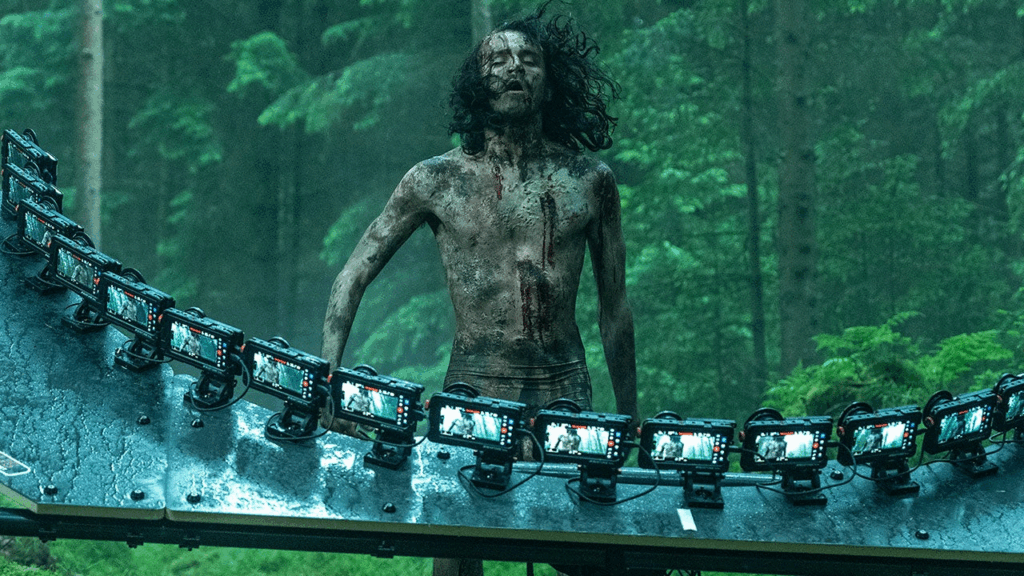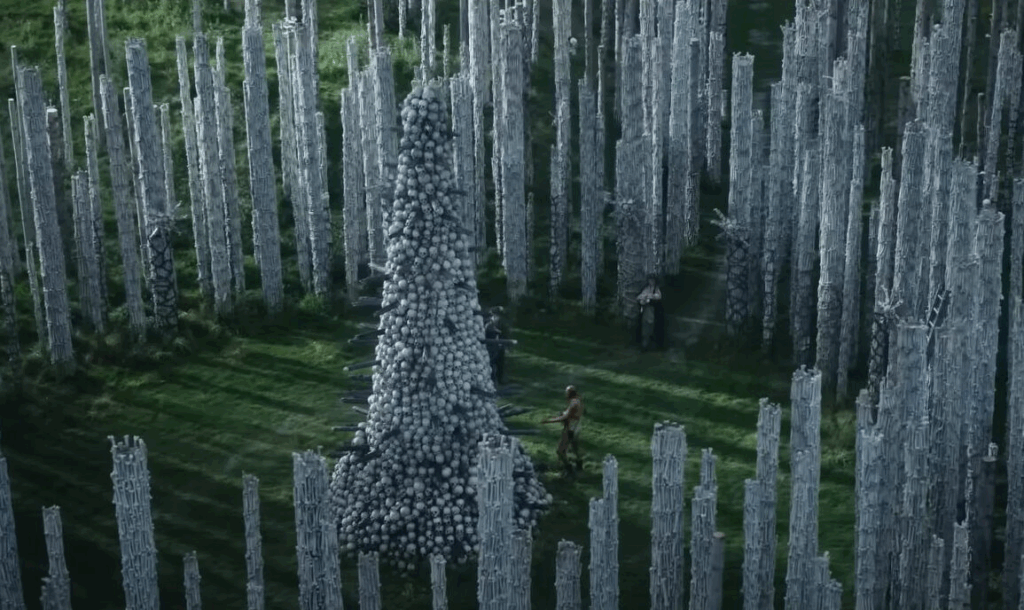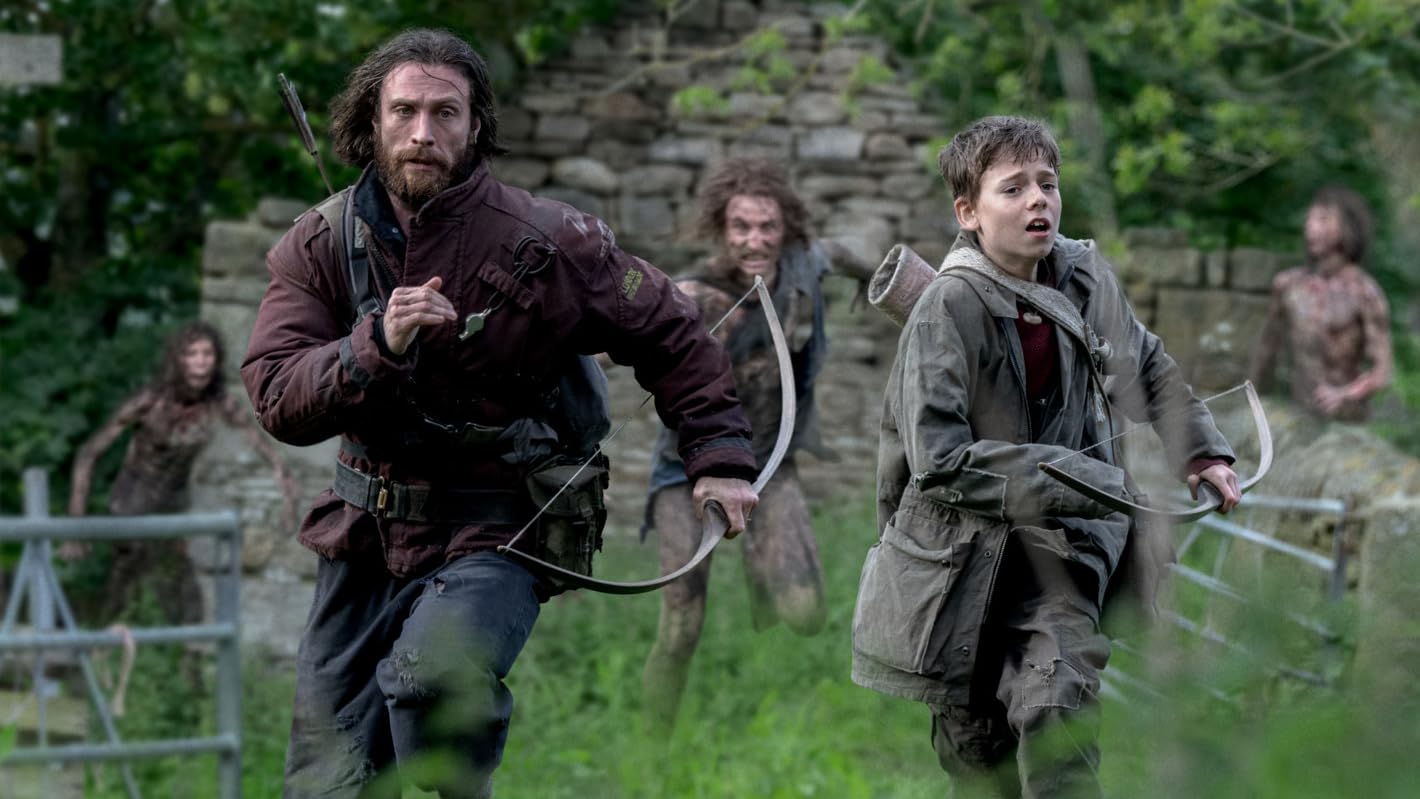Image: IMDB
From days, to weeks and now years. Director Danny Boyle has once again teamed up with revered screenwriter Alex Garland to finally release the third movie in the thrilling zombie franchise that follows the terrifying rage virus. 28 years later comes 22 years after the initial 28 days later film, and to say the movie is unpredictable at every turn would be an understatement. The film does a fantastic job of carrying on the bleak and gritty nature of the original and successfully presents itself as a political allegory, however some parts of the movie can feel a bit disjointed, with the ending in particular leaving you wondering what the hell you just watched.
28 years later is set almost 3 decades on from the initial outbreak of the rage virus, a disease that was created by scientists in an attempt to inhibit human rage, only to backfire and spread through the United Kingdom in the form of a zombie-adjacent infection. The film follows the story of a family who live in an isolated community that is situated on a small island next to mainland Britain. The islanders are able to access the mainland through a causeway that becomes submerged at high tide. The protagonist of the film is 12 year old Spike, played by Alfie Williams, who is taken by his father Jamie, played by Aaron Taylor-Johnson, to venture out onto the mainland for the first time to hunt the infected. After returning from his first journey, Spike takes his ailing mother, Isla, played by Jodie Comer, to the island in hopes of finding a doctor who can diagnose and cure her illness.
The film features beautiful cinematography by Anthony Dod Mantle, with the lush scenery of the mainland contrasting the gritty aesthetic of the sanctioned off island. An innovative artistic decision of the film lies in the frantic 360 degree shots simultaneously recorded by multiple iPhones to depict violent scenes with the zombies, perfectly adding to the frenetic nature of the action in the movie.

Image: IGN
One of the more potent thematic elements of the film is framed within a dramatic montage that depicts Spike and Jamie leaving the island for the first time. The scene is effective in displaying the age-old tradition of young British men leaving home to engage in violence under the pretense of gaining respect within their community. As Spike ventures into the mainland with the goal of killing an infected for the first time, a combination of archival footage of young soldiers marching through bleak, wartorn fields, and re-enactments of medieval armies preparing for battle is interspliced into the scene. The symbolism is heightened by the non-diagetic use of the iconic boots poem, which creates a dreary atmosphere and solidifies the film’s underlying themes of violence being a historic rite of passage for young British men. We see this in the beginning of Spike’s journey, through his fathers encouragement of killing the infected and the way his town celebrates his ‘achievement’ upon his return. However we can tell early on that Spike doesn’t connect with the same values as his father, shown initially through his hesitance to kill some of the infected and then through his connection with his mother, taking us to the second plot point where his character truly develops.
After his first visit to the mainland Spike returns with his mother Isla who is suffering from an unknown illness to find Dr. Ian Kelson, played by Ralph Fiennes, for help. In the second half of the movie Spike learns that death and love are just as important as each other when he finds out that Isla has brain cancer. She is ultimately euthanised by Dr. Kelson and Spike is given her skull to place atop a tower of skulls, symbolizing his acceptance of her death. While this half of the film provides an emotionally stirring contrast to the initial sequences of violence, the two halves almost feel like separate stories, causing the movie to feel slightly disjointed.

Image: Horreur Québec
The ending of the movie presented a very jarring tonal shift. After the death of his mother, Spike decides to remain on the mainland rather than returning to his home island. Whilst living off the lands, Spike ends up being chased by a hoard of zombies, eventually running into a dead end. Then, out of nowhere, a group of men come to Spike’s rescue. These men are dressed in colourful tracksuits and all call themselves ‘Jimmy,’ (the name of a boy who survives the initial outbreak in the opening scene of the film). The Jimmy’s then launch into an almost comedic fight scene, slaughtering all the zombies and then inviting Spike to join them.
While there is lots of speculation surrounding the meaning of the ending, Jimmy’s character is not one that is thoroughly explored through the movie, with his only appearances being at the beginning and end. While the weird ending did provide me with increased interest in the anticipated follow up movie, 28 Years Later: The Bone Temple, overall I just left the cinema confused, and the bizarre final scene almost distracted from the rest of the movie.
